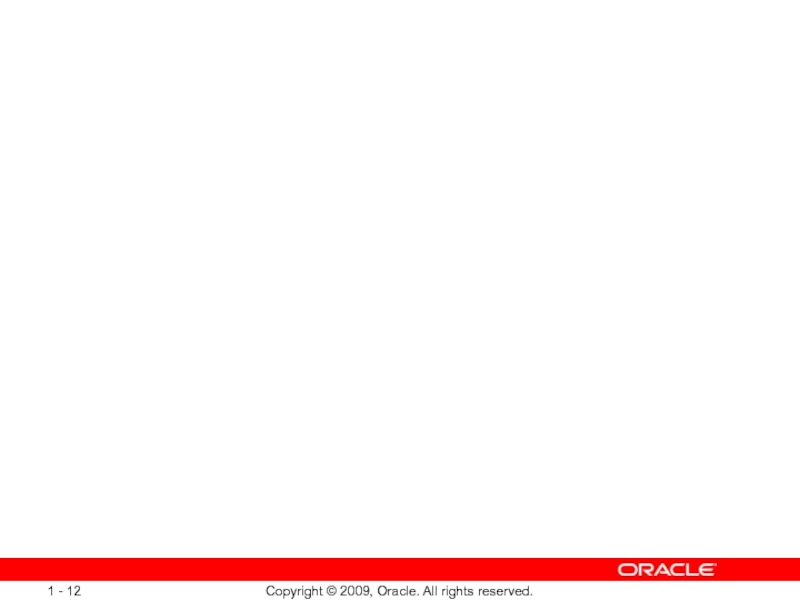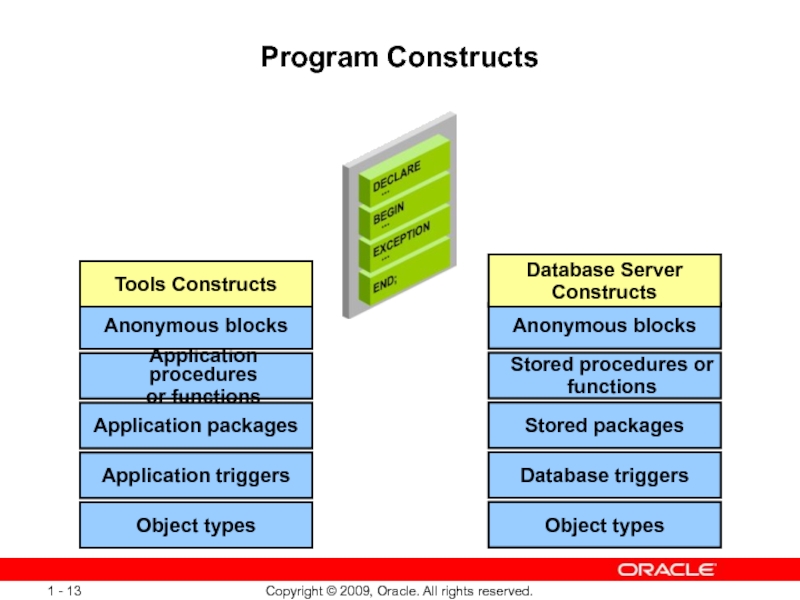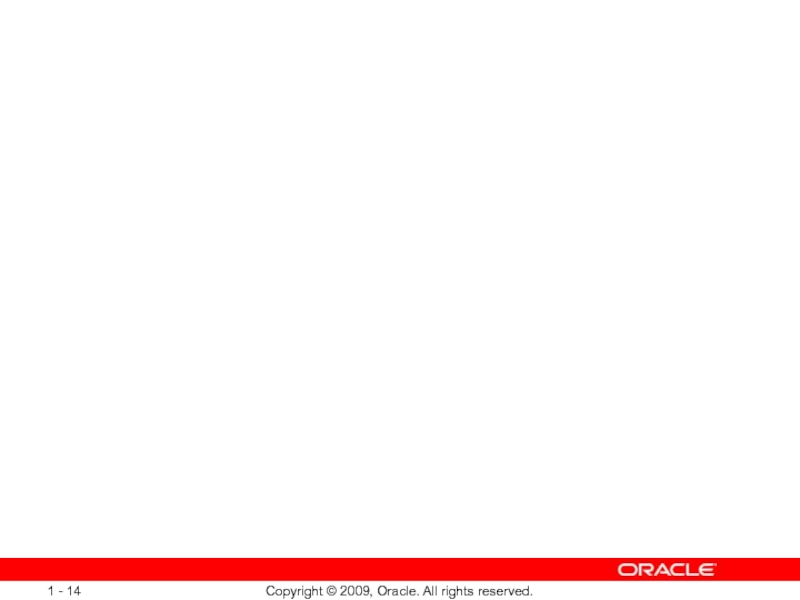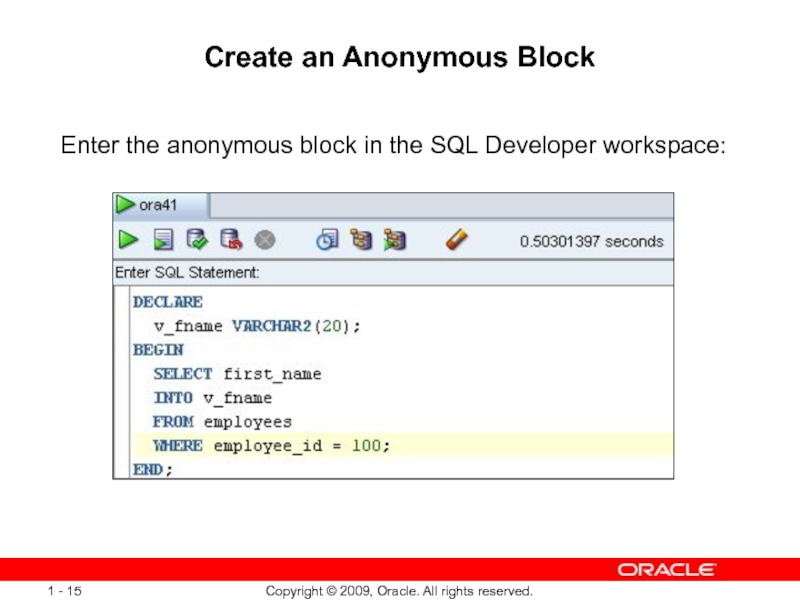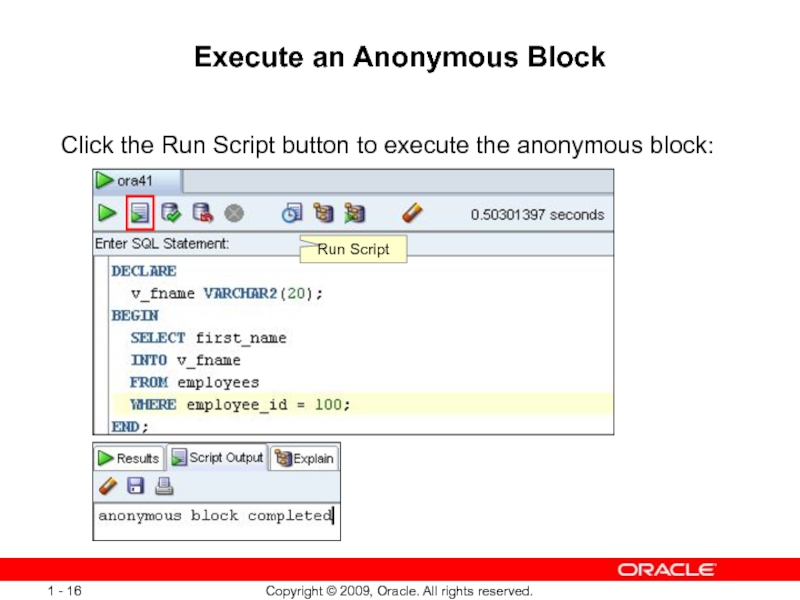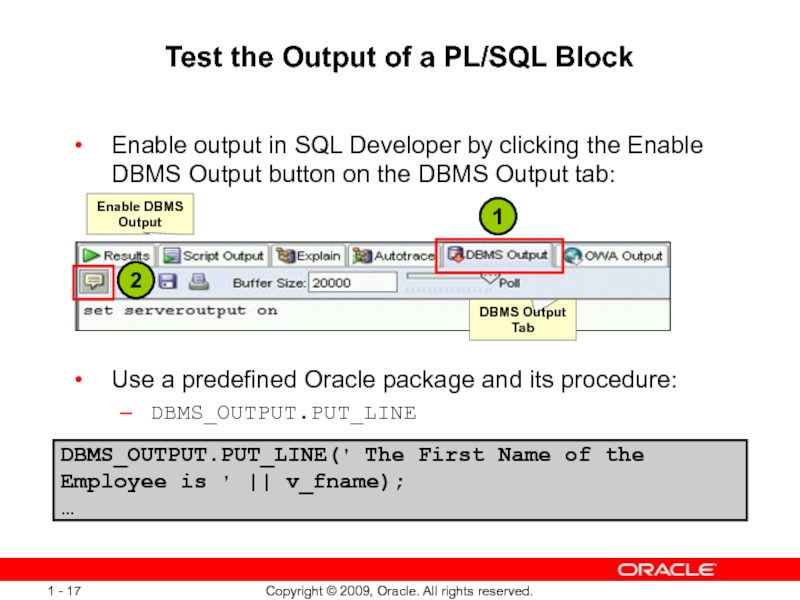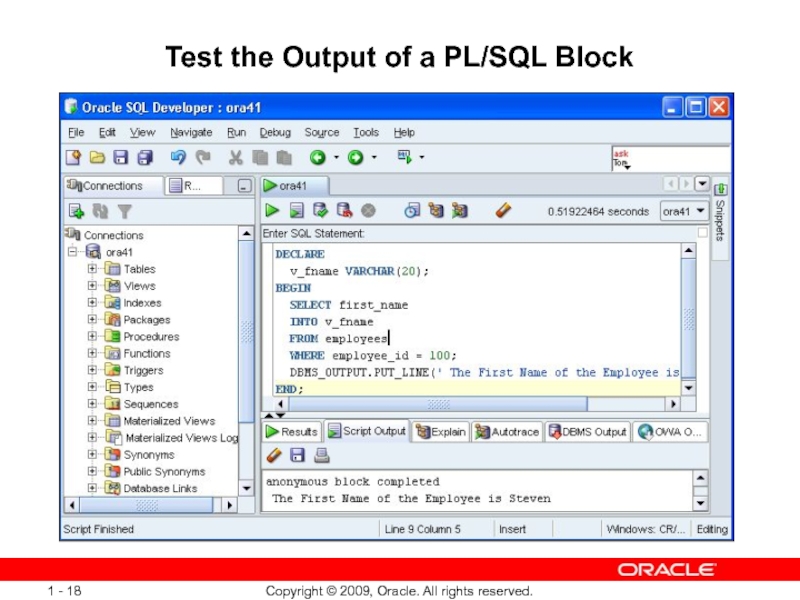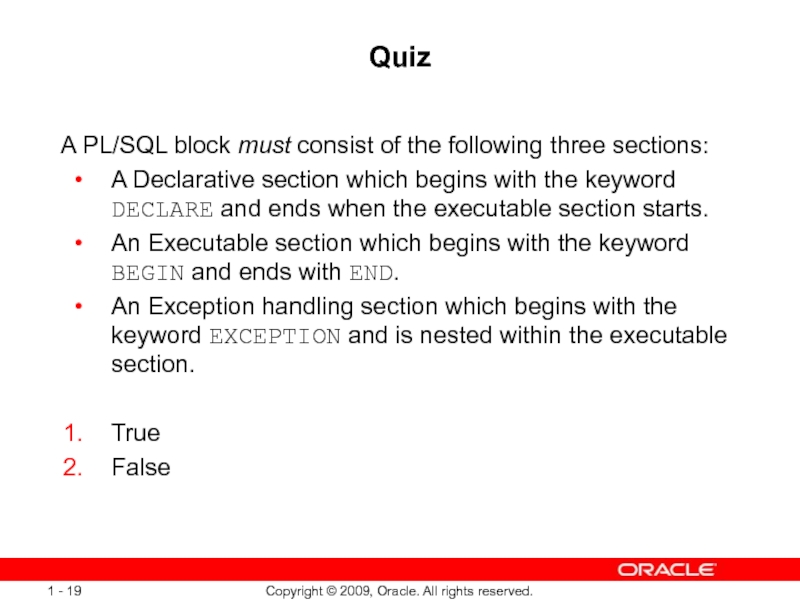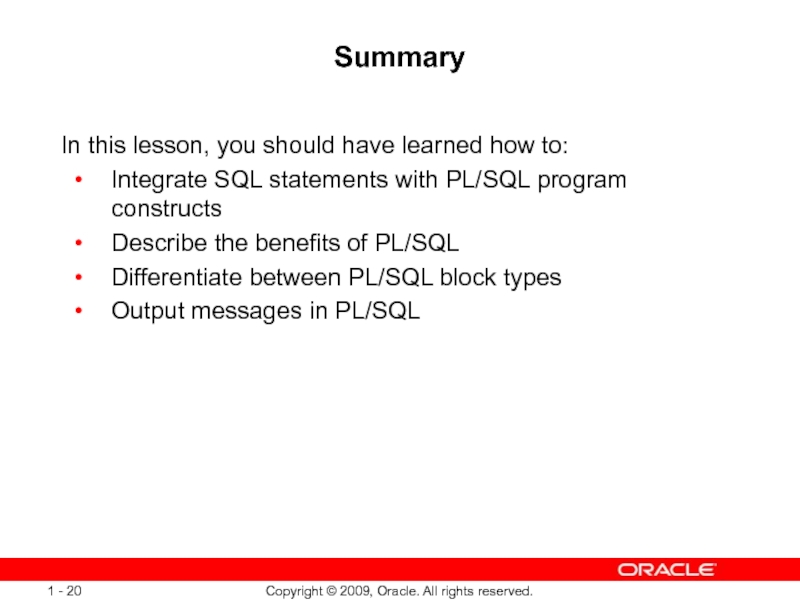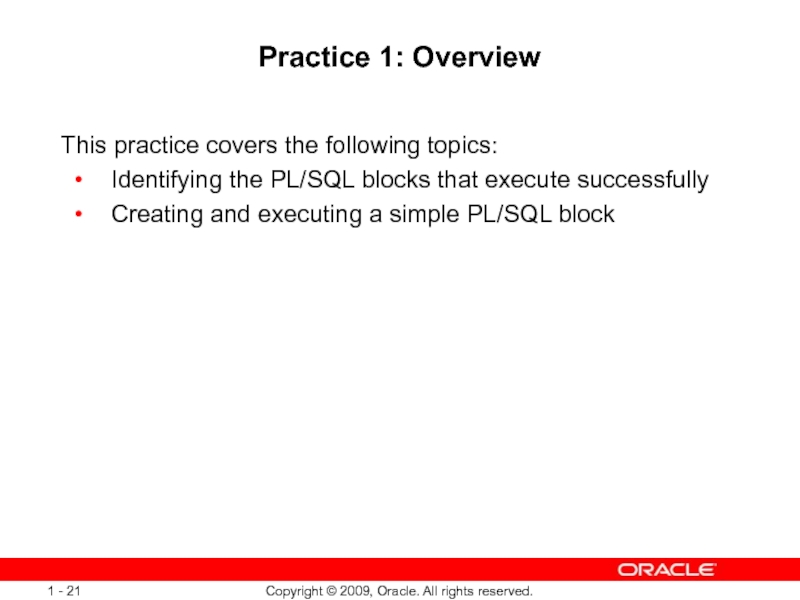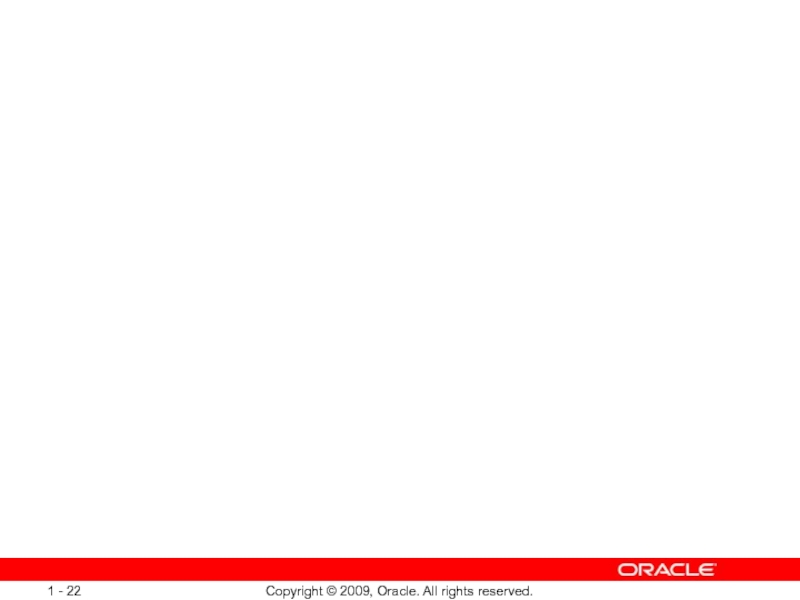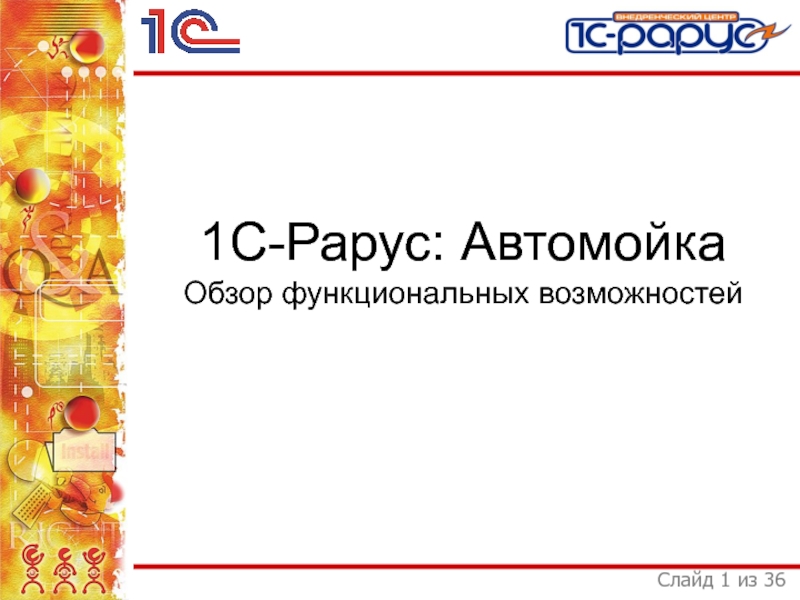- Главная
- Разное
- Дизайн
- Бизнес и предпринимательство
- Аналитика
- Образование
- Развлечения
- Красота и здоровье
- Финансы
- Государство
- Путешествия
- Спорт
- Недвижимость
- Армия
- Графика
- Культурология
- Еда и кулинария
- Лингвистика
- Английский язык
- Астрономия
- Алгебра
- Биология
- География
- Детские презентации
- Информатика
- История
- Литература
- Маркетинг
- Математика
- Медицина
- Менеджмент
- Музыка
- МХК
- Немецкий язык
- ОБЖ
- Обществознание
- Окружающий мир
- Педагогика
- Русский язык
- Технология
- Физика
- Философия
- Химия
- Шаблоны, картинки для презентаций
- Экология
- Экономика
- Юриспруденция
Introduction to PL/SQL презентация
Содержание
- 1. Introduction to PL/SQL
- 2. Objectives After completing this
- 3. About PL/SQL PL/SQL: Stands
- 4. About PL/SQL PL/SQL:
- 5. PL/SQL Environment
- 6. Benefits of
- 7. Benefits of PL/SQL
- 9. PL/SQL Block Structure DECLARE (optional) Variables, cursors,
- 11. Block Types Anonymous Procedure Function [DECLARE]
- 13. Program Constructs Application triggers Application packages Application
- 15. Create an Anonymous Block Enter the anonymous block in the SQL Developer workspace:
- 16. Execute an Anonymous Block Click the Run
- 17. Test the Output of a PL/SQL Block
- 18. Test the Output of a PL/SQL Block
- 19. Quiz A PL/SQL block must consist of
- 20. Summary In this
- 21. Practice 1: Overview
Слайд 2
Objectives
After completing this lesson, you should be able to do the
Explain the need for PL/SQL
Explain the benefits of PL/SQL
Identify the different types of PL/SQL blocks
Output messages in PL/SQL
Слайд 3
About PL/SQL
PL/SQL:
Stands for “Procedural Language extension to SQL”
Is Oracle Corporation’s standard
Seamlessly integrates procedural constructs with SQL
Слайд 4
About PL/SQL
PL/SQL:
Provides a block structure for executable units of code. Maintenance
Provides procedural constructs such as:
Variables, constants, and data types
Control structures such as conditional statements and loops
Reusable program units that are written once and executed many times
Слайд 5
PL/SQL Environment
PL/SQL engine
Oracle database server
SQL statement
executor
Procedural
statement
executor
procedural
SQL
PL/SQL
block
Слайд 6
Benefits of PL/SQL
Integration of procedural constructs with SQL
Improved performance
SQL
IF...THEN
SQL
ELSE
SQL
END IF;
SQL
SQL 1
SQL
…
Слайд 7
Benefits of PL/SQL
Modularized program development
Integration with Oracle tools
Portability
Exception handling
Слайд 9PL/SQL Block Structure
DECLARE (optional)
Variables, cursors, user-defined exceptions
BEGIN (mandatory)
SQL statements
PL/SQL statements
EXCEPTION (optional)
Actions
END; (mandatory)
Слайд 11Block Types
Anonymous Procedure Function
[DECLARE]
BEGIN
--statements
[EXCEPTION]
END;
PROCEDURE name
IS
BEGIN
--statements
[EXCEPTION]
END;
FUNCTION name
RETURN datatype
IS
BEGIN
--statements
[EXCEPTION]
END;
Слайд 13Program Constructs
Application triggers
Application packages
Application procedures
or functions
Anonymous blocks
Tools Constructs
Object types
Database triggers
Stored packages
Stored
functions
Anonymous blocks
Database Server
Constructs
Object types
Слайд 16Execute an Anonymous Block
Click the Run Script button to execute the
Run Script
Слайд 17Test the Output of a PL/SQL Block
Enable output in SQL Developer
Use a predefined Oracle package and its procedure:
DBMS_OUTPUT.PUT_LINE
DBMS_OUTPUT.PUT_LINE(' The First Name of the Employee is ' || v_fname);
…
Enable DBMS Output
DBMS Output Tab
1
2
Слайд 19Quiz
A PL/SQL block must consist of the following three sections:
A Declarative
An Executable section which begins with the keyword BEGIN and ends with END.
An Exception handling section which begins with the keyword EXCEPTION and is nested within the executable section.
True
False
Слайд 20
Summary
In this lesson, you should have learned how to:
Integrate SQL statements
Describe the benefits of PL/SQL
Differentiate between PL/SQL block types
Output messages in PL/SQL
Слайд 21
Practice 1: Overview
This practice covers the following topics:
Identifying the PL/SQL blocks
Creating and executing a simple PL/SQL block
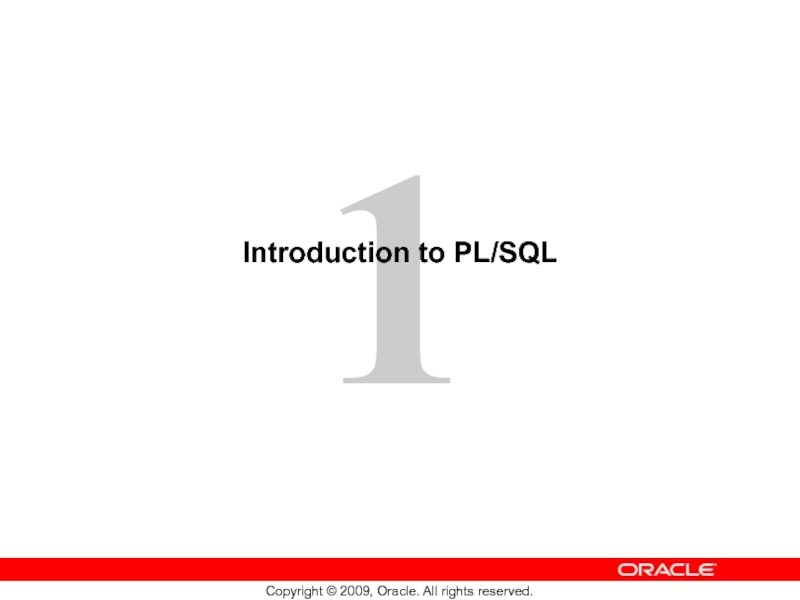
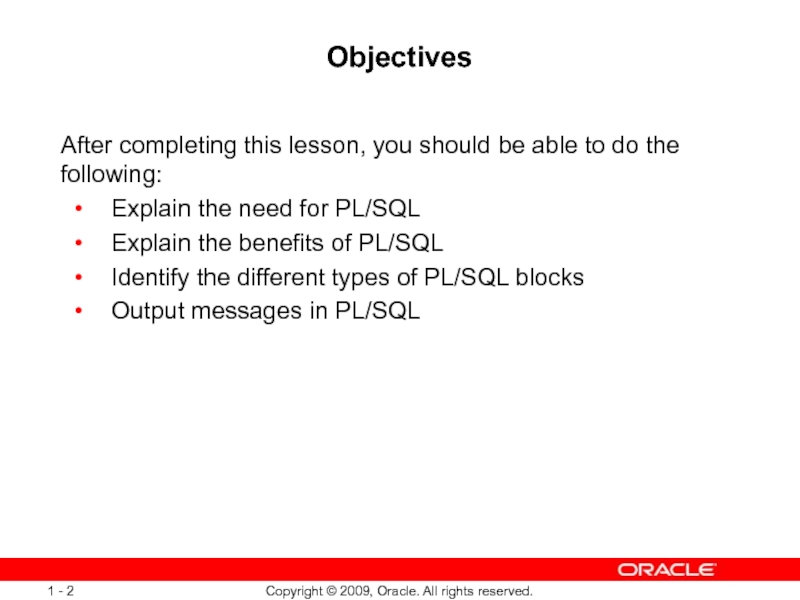
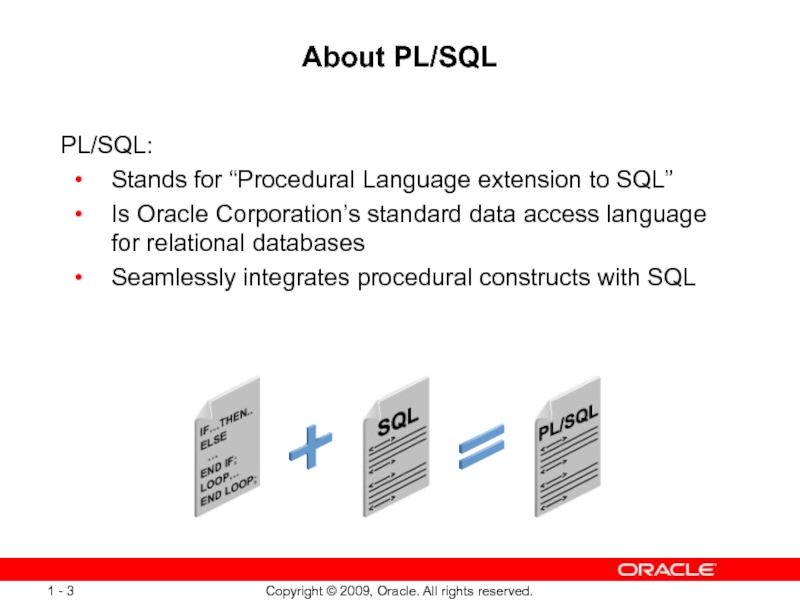
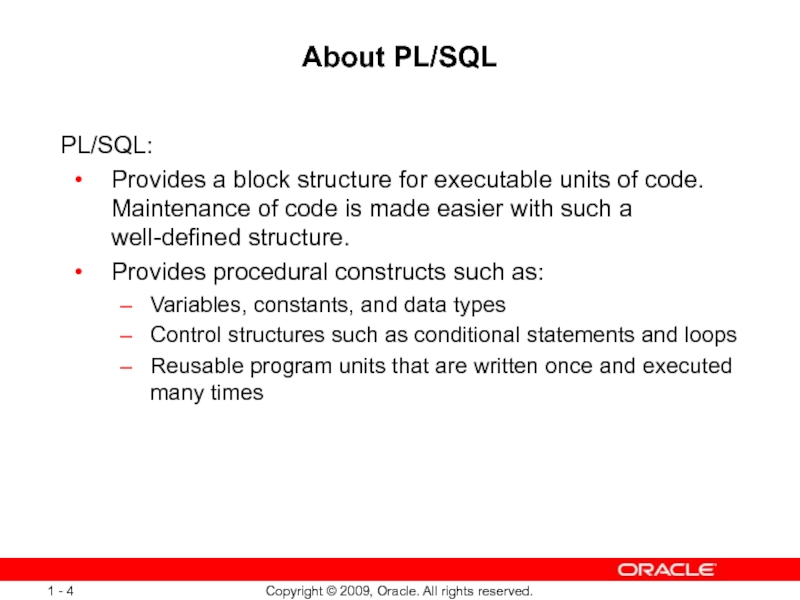
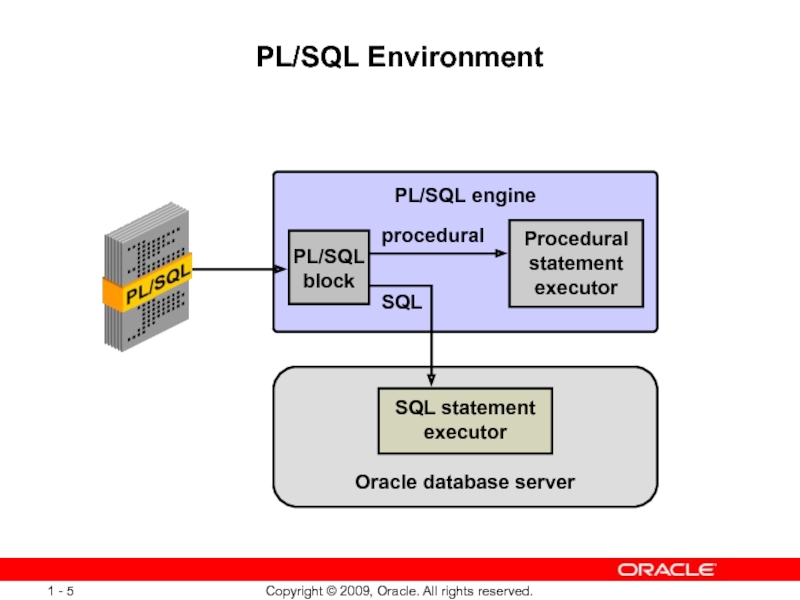
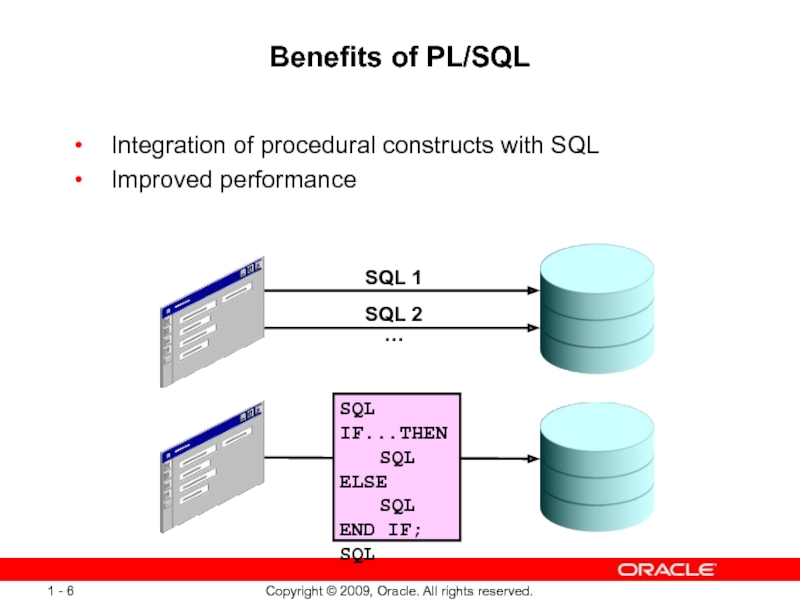
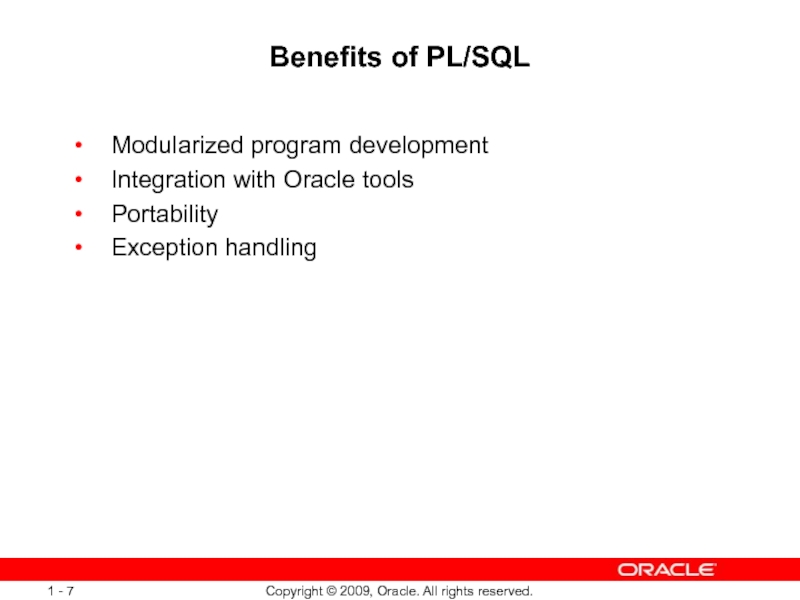
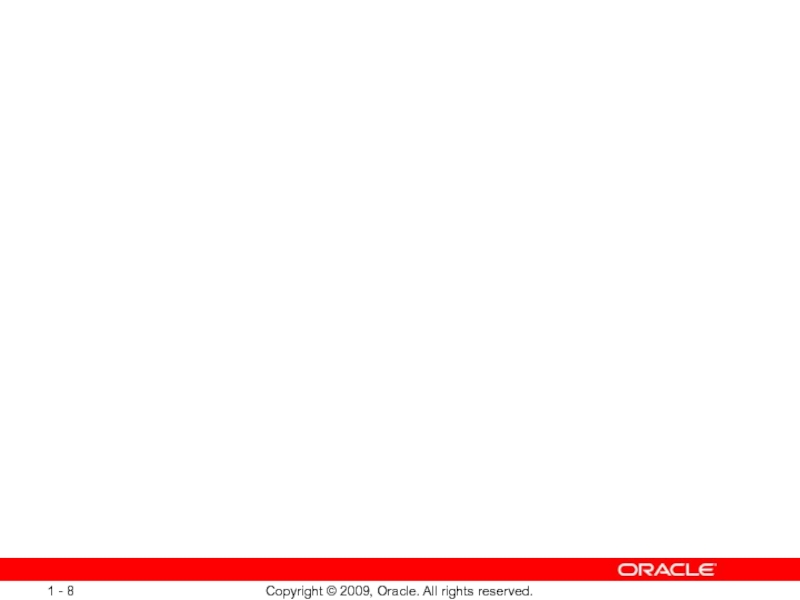
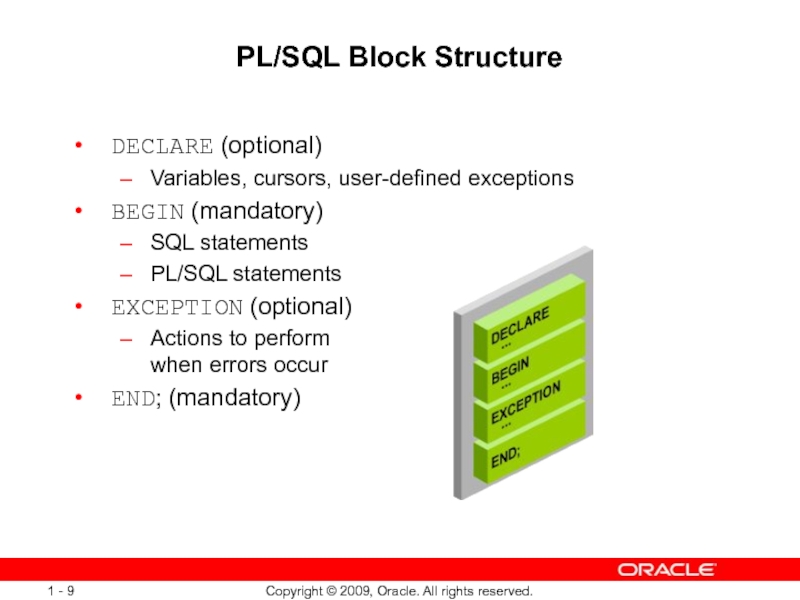
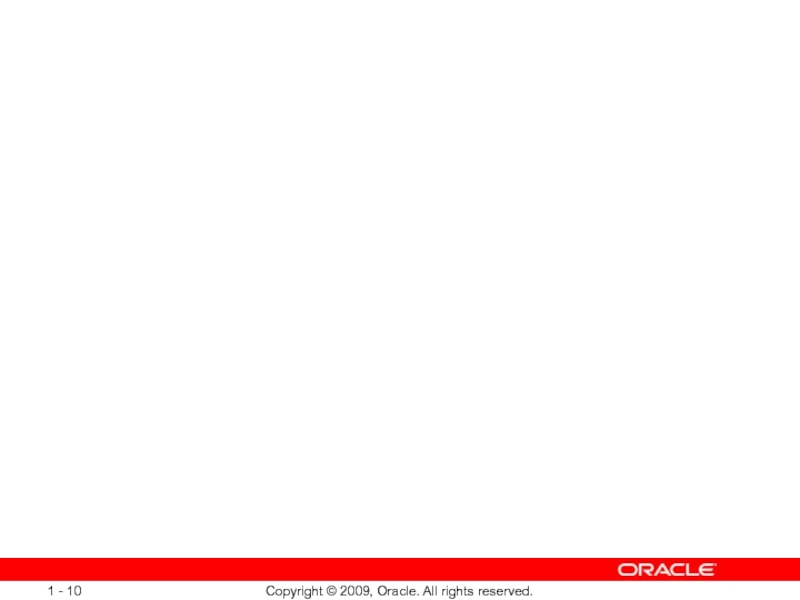
![Block Types Anonymous Procedure Function[DECLARE]BEGIN --statements[EXCEPTION]END;PROCEDURE nameISBEGIN --statements[EXCEPTION]END;FUNCTION nameRETURN datatypeISBEGIN --statements RETURN value;[EXCEPTION]END;](/img/tmb/5/422153/463ce4cbcc6a1ba2cc60ec7eac038de7-800x.jpg)
